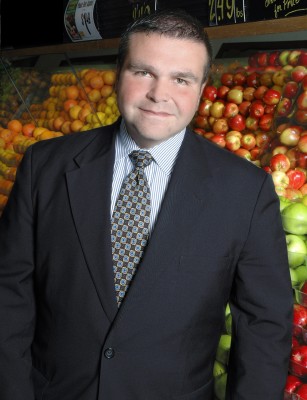 I grew up in our family grocery store. By six years old, I was packing produce. By 12, I was a butcher. By 14, I was doing the books, and by 16 or 17, I knew how to run the operation. All of this experience serves as the backbone to my role today as CEO of ShopRite in Passaic, New Jersey.
I grew up in our family grocery store. By six years old, I was packing produce. By 12, I was a butcher. By 14, I was doing the books, and by 16 or 17, I knew how to run the operation. All of this experience serves as the backbone to my role today as CEO of ShopRite in Passaic, New Jersey.
My parents emigrated from Cuba to Spain, where I was born, and then moved the family to the United States. My father worked for a food wholesaler until he opened a bodega in Paterson, New Jersey with my godfather, one of his best friends. A decade later, they parted ways, and in 1984, my dad opened a small supermarket in the city of Passaic. He ran the market for 12 years before passing away. Our family was embedded in the fiber of the community—the politics and the people—and our bodega was a thriving centerpiece.

After my dad’s passing, I made the decision to leave the Navy, where I was a lieutenant, to take over the family business. At first it was a temporary fix. I had an interest in medicine and was pursuing postbaccalaureate work to prepare for medical school. But in 2004, Wakefern Food Corporation invited me to become a member.
Channeling my father’s entrepreneurial legacy, I took the plunge and sold the bodega. My brother and mother took their shares and, in 2005, I invested mine into ownership of a ShopRite in the same town.
Wakefern consists of 50 members who individually own and operate ShopRite stores, and currently, I am the only Hispanic owner. Members run anywhere from one to more than 30 stores. This cooperative structure allows us to tap into economies of scale—meaning we buy collectively and pass those savings along to consumers.
In essence, I went from a mom-and-pop shop to an entirely corporate operation. I took 50 employees with me from the bodega and entered a new world with 150 ShopRite employees who were used to a different rulebook. We were unionized overnight. I had to adapt my style of leadership and motivation to survive. But today, I can proudly say, we have low turnover in comparison to industry averages. Much of that is to the credit of our management practices.
By knowing the consumers, keeping an eye on trends, and leading the store associates, in just eight years, my ShopRite store has almost doubled in sales.
Being independently owned allows the store to have all the benefits of a mass market while still maintaining a local bodega feel. I have about 40,000 unique customers, and I know a lot of them, probably hundreds—who they are, their families, and what they need. That is only possible by being on-site. Even now, several years in, I still pull 50- or 60-hour workweeks at the store (down from 80 to 100 hours at the start).
When I look at the faces of my shoppers, the number one trend is ethnic diversity. We have customers from 17 different Hispanic nations as well as large communities from Indian, Jewish, Muslim, Slavic, African-American, and Polish cultures. We cater to that diversity by serving up comfort foods and spices from their native lands—up to 20 percent of our inventory is comprised of international products. Many of our employees reside in the neighborhood, so they too reflect its diversity and deepen our community roots.
Beyond the recent boom in ethnic foods, people’s lifestyles are also shifting, which affects our business. Online shopping is rampant, and not just for clothes and media. Now customers are even buying their laundry detergent and toothpaste on the web.
Another offshoot of our time-starved culture is the need for prepared meals. Most parents don’t want to give a frozen dinner to their family, but they gladly swing by the store for a pound of cooked pernil, prepare the rice and vegetables themselves and, voilà, they have a home-cooked meal.
Grocers who stay on top of these trends and move with the culture will prevail, having the community rallying around them in support.

